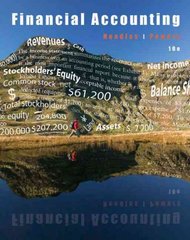
answer in dollars, not millions of dollars, e.g., 1,234,567.) b. The new RDS project is somewhat riskier than a typical project for DEI, primarily because the plant is being located overseas. Management has told you to use an adjustment factor of +3 percent to account for this increased riskiness. Calculate the appropriate discount rate to use when evaluating DEI's project. (Do not round intermediate calculations and enter your answer as a percent rounded to 2 decimal places, e.g., 32.16.) c. The manufacturing plant has an eight-year tax life, and DEI uses straight-line depreciation. At the end of the project (.e., the end of Year 5), the plant can be scrapped for $1.68 million. What is the aftertax salvage value of this manufacturing plant? (Do not round Intermediate calculations and enter your answer in dollars, not millions of dollars, e.g., 1,234,567.) d. The company will incur $2,480,000 in annual fixed costs. The plan is to manufacture 14,800 RDSs per year and sell them at $12,200 per machine; the variable production costs are $11,400 per RDS. What is the annual operating cash flow, OCF, from this project? (Do not round intermediate calculations and enter your answer in dollars, not millions of dollars, e.g., 1,234,567.) e. Calculate the project's net present value. (Do not round intermediate calculations and enter your answer in dollars, not millions of dollars, rounded to 2 decimal places, e.g., 1,234,567.89) f. Calculate the project's internal rate of return. (Do not round intermediate calculations and enter your answer as a percent rounded to 2 decimal places, e.g., 32.16.) % a. Time 0 cash flow b. Discount rate c. Aftertax salvage value d. Operating cash flow e. NPV f. IRR % answer in dollars, not millions of dollars, e.g., 1,234,567.) b. The new RDS project is somewhat riskier than a typical project for DEI, primarily because the plant is being located overseas. Management has told you to use an adjustment factor of +3 percent to account for this increased riskiness. Calculate the appropriate discount rate to use when evaluating DEI's project. (Do not round intermediate calculations and enter your answer as a percent rounded to 2 decimal places, e.g., 32.16.) c. The manufacturing plant has an eight-year tax life, and DEI uses straight-line depreciation. At the end of the project (.e., the end of Year 5), the plant can be scrapped for $1.68 million. What is the aftertax salvage value of this manufacturing plant? (Do not round Intermediate calculations and enter your answer in dollars, not millions of dollars, e.g., 1,234,567.) d. The company will incur $2,480,000 in annual fixed costs. The plan is to manufacture 14,800 RDSs per year and sell them at $12,200 per machine; the variable production costs are $11,400 per RDS. What is the annual operating cash flow, OCF, from this project? (Do not round intermediate calculations and enter your answer in dollars, not millions of dollars, e.g., 1,234,567.) e. Calculate the project's net present value. (Do not round intermediate calculations and enter your answer in dollars, not millions of dollars, rounded to 2 decimal places, e.g., 1,234,567.89) f. Calculate the project's internal rate of return. (Do not round intermediate calculations and enter your answer as a percent rounded to 2 decimal places, e.g., 32.16.) % a. Time 0 cash flow b. Discount rate c. Aftertax salvage value d. Operating cash flow e. NPV f. IRR %







